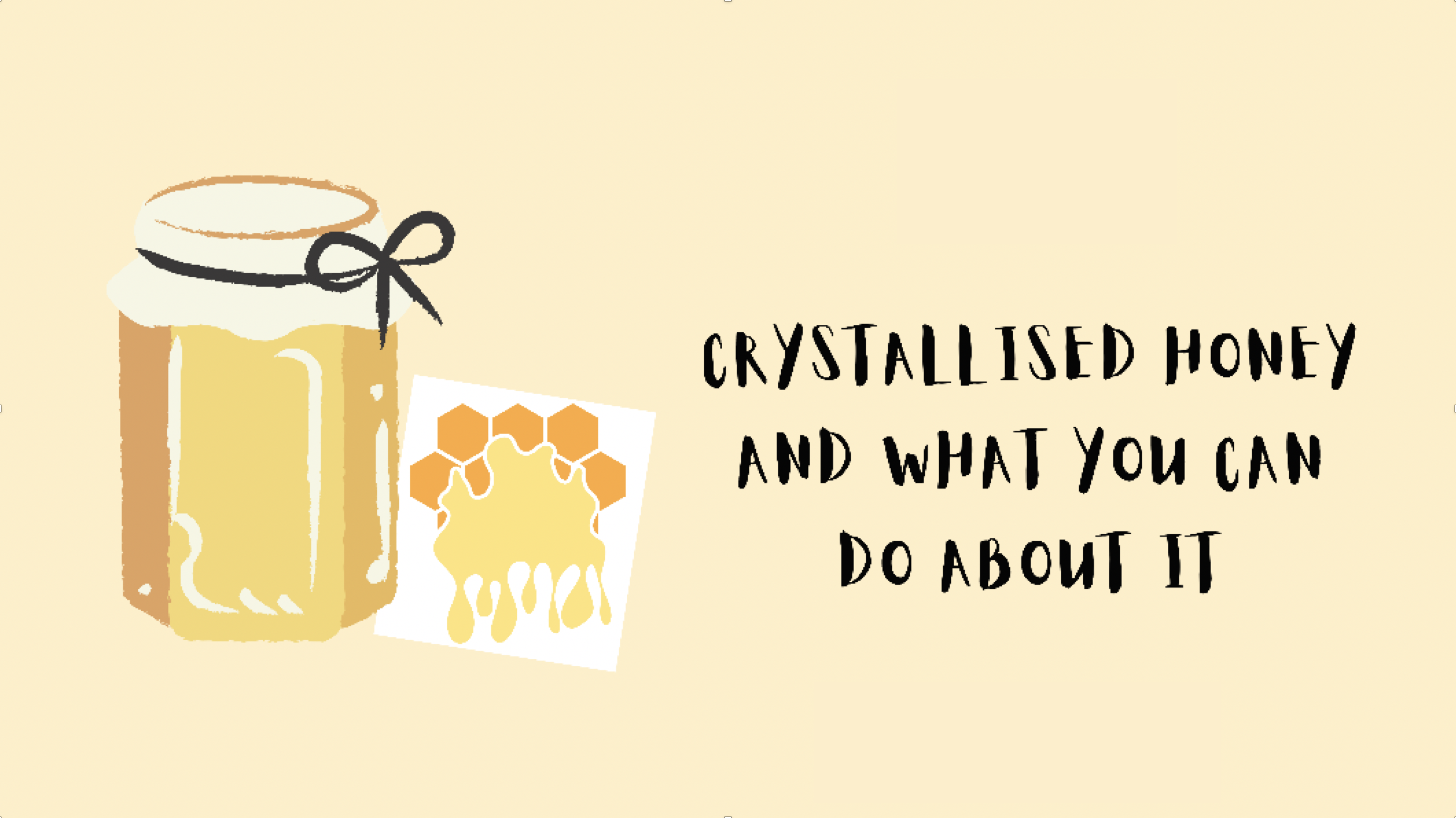CRYSTALLISED HONEY AND WHAT YOU CAN DO ABOUT IT
Have you ever noticed your raw & unfiltered honey looking a little hard, grainy, and lumpy? Before you impulsively throw it out, know that your honey is not bad, it’s just changing! When honey changes from liquid to a semi-solid state, is called crystallised honey – and it’s totally natural. When honey crystallises, it is still as nutritious and sweet as ever! In fact, the crystals prove that your honey is high quality and hasn’t been processed. Those little lumps or white flecks you see are a sign that your honey is as close to natural as possible – in fact, honey will even crystallise when it’s still in the hive!
There are three things that make honey likely to crystallise:
- Temperature
- The ratio of glucose and fructose in the honey
- Pollen

TEMPERATURE
Raw & unfiltered honey is more likely to crystallise, as the nutritious pollen hasn’t been filtered out and important enzymes haven’t been damaged by pasteurisation. Since temperatures lower than 50 degrees Fahrenheit (10 degrees Celsius) can cause crystallization, you may also notice that during colder months of Autumn and Winter, the honey in your cabinet might begin to crystallize. Do not store your honey in the fridge as this will accelerate the crystallisation of the honey.
GLUCOSE & FRUCTOSE RATIO
Glucose and fructose play a key role in crystallisation. When bees hop from flower to flower, they’re collecting rich nectar, which will eventually become honey. That nectar is made up of two sugars: glucose and fructose. Different flower nectars have different ratios, and the crystals in your honey will reflect those different ratios. For example, honey from sunflowers, canola and clovers crystallise quicker, while eucalyptus honey changes slower.
POLLEN
Pollen being present is simply a side effect of the bees’ honey making process. While bees collect nectar, they can rub their fuzzy little bodies on the flower’s pollen, and it can find its way into the hive and into the honey. With pollen in honey, the little particles provide a base for crystallisation to begin. Having pollen in your honey is not a bad thing; not only is pollen healthy, but it’s also important to keep pollen in your honey to test which flower it came from. Pollen traces also ensures that your honey hasn’t been processed.
WHAT TO DO IF YOUR HONEY HAS CRYSTALLISED
For those of you who like to keep your honey slippery smooth, it is fairly simple to turn your honey back into a smooth liquid again by heating it.
The best way to do this is to stand your honey jars in a bowl of warm water and slowly letting it warm up for a couple of hours. Don’t heat it too much and remember to stir it. Microwaving overheats the honey and will destroy many of your favourite enzymes and vitamins, so that’s not recommended unless you really want to.
The other option is to just embrace it! Crystallised honey is just part of the process and simply natural – in fact, it’s actually a sign of high-quality honey!



